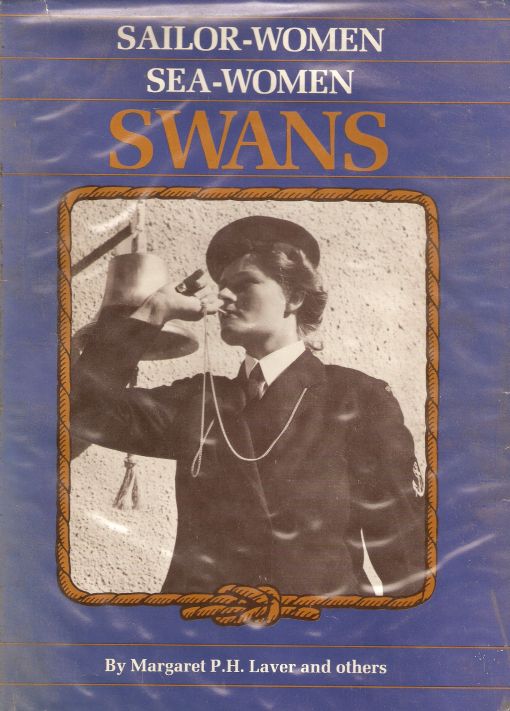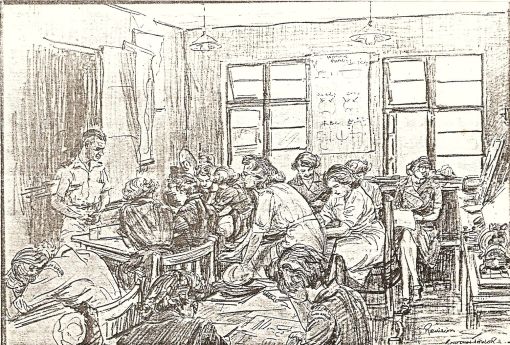I should have mentioned that before leaving Robben Island Lieut. Perkins had helped with the training of the first group of SWANS to be sent to the Island for A/S F/D training. It was in 1943 that proposals were made for the training of ladies in the Navy, in the same way as there were WAASs in the Army and WAAFs in the Air Force. When this project was first mentioned there was considerable opposition to it by naval officers, but it soon gained general acceptance. The officers in the Defence Department proposed that the new force should be known as the WANS, to fit in with the WAASs and WAAFs of the other services, but I objected strenuously as the word “wan” in English means “pale”, “weak” and “sad”. So the major from HQ who was behind all this said to me “what then would you call them?” to which I replied “SWANS, to match up with the RN’s WRENS, of course.” “Where do you get the ‘S’ from?” asked the major, to which my reply was, “From the ‘South Africa’ which is what they would be.” So it was decided and the name SWANS was born.
Shortly afterwards the new unit was also born. I’ve forgotten how many young ladies were recruited and did their initial training at Wynberg Military Base, learning how to fall in, to turn together, to march, and so on. Then the best educated among them, all who had had first class passes in their Matriculation examinations with maths and science as subjects, were chosen to ‘man’ the anti-submarine stations in the seaports of South Africa, from Saldanha Bay right round to Durban. Most of them came to S/D R/I for their technical training, but a few went to Saldanha Bay for the controlled minefield course.
The SWANS came to us in classes of about a dozen strong and for each class the training took about six weeks, after which they had to pass written and practical tests. As I had spent much of my life in studying ships I was the ‘expert’ on the Island for the identification of the ships that entered Table Bay, not so much individual ships as the type and/or class of each chip. Thus I was also told off to give the girls some ideas about identifying ships that entered Table Bay.
As time went by first Lieut. Lewis (who had much to do with all the engines and instruments which we had to use) and later Lieut. Perkins (who was our Commanding Officer and thus had much to see to) dropped out of the training of the new SWANS and so all this work fell on me. As I had also the normal watch-keeping to do my life became very busy, but, fortunately I loved all my work. Might I just say here that when the SWANS had passed their tests at the end of their six weeks training they reached the rank equivalent to that of Able Seaman. With the first batch of SWANS, after they had had about six month’s experience, we gave them more difficult tests to pass which, if they did, entitled them to be up-graded to the equivalent of leading seaman and to wear on their sleeves the of their dresses the much-sought-after LS badge of two crossed anchors. It was from this group that we chose our first Petty Officer SWANS and a fine group they turned out to be.
If I remember rightly there were two groups of SWANS trained in Saldanha Bay and eight groups on Robben Island, but some, if not all, of the Saldanha SWANS later came to S/D R/I for the A/S F/D course.
In no other part of the world were women trained for A/S F/D work, but we found that our SWANS did their work willingly and efficiently. We never had SWANS reporting from shore leave ‘drunk and disorderly’ as we often had while seamen were doing the A/S F/D work, nor did any of them ever come aboard late, as the male ratings often did. Also their watch keeping was of a high standard. In only one thing were they inferior to the male ratings and that was in the repairing and maintenance of the actual A/S F/D instruments. Thus we kept a few Leading Seamen and two Petty Officers to do this work. Fortunately relations between the male and female ratings were very good and there were no ‘unfortunate incidents.’
The training and successful work of the SWANS meant that in all A/S F/D stations round the country seventy seamen were released for service at sea. This would not have meant much to the navies of the big powers but to the SANF it was a great help.
Note: All the above illustrations are from Meg Laver’s wonderfully-researched and produced book on the Swans. Meg was a life-long Swan enthusiast and kept contact with my father into his very late years. He deeply appreciated her friendship.




Leave a comment